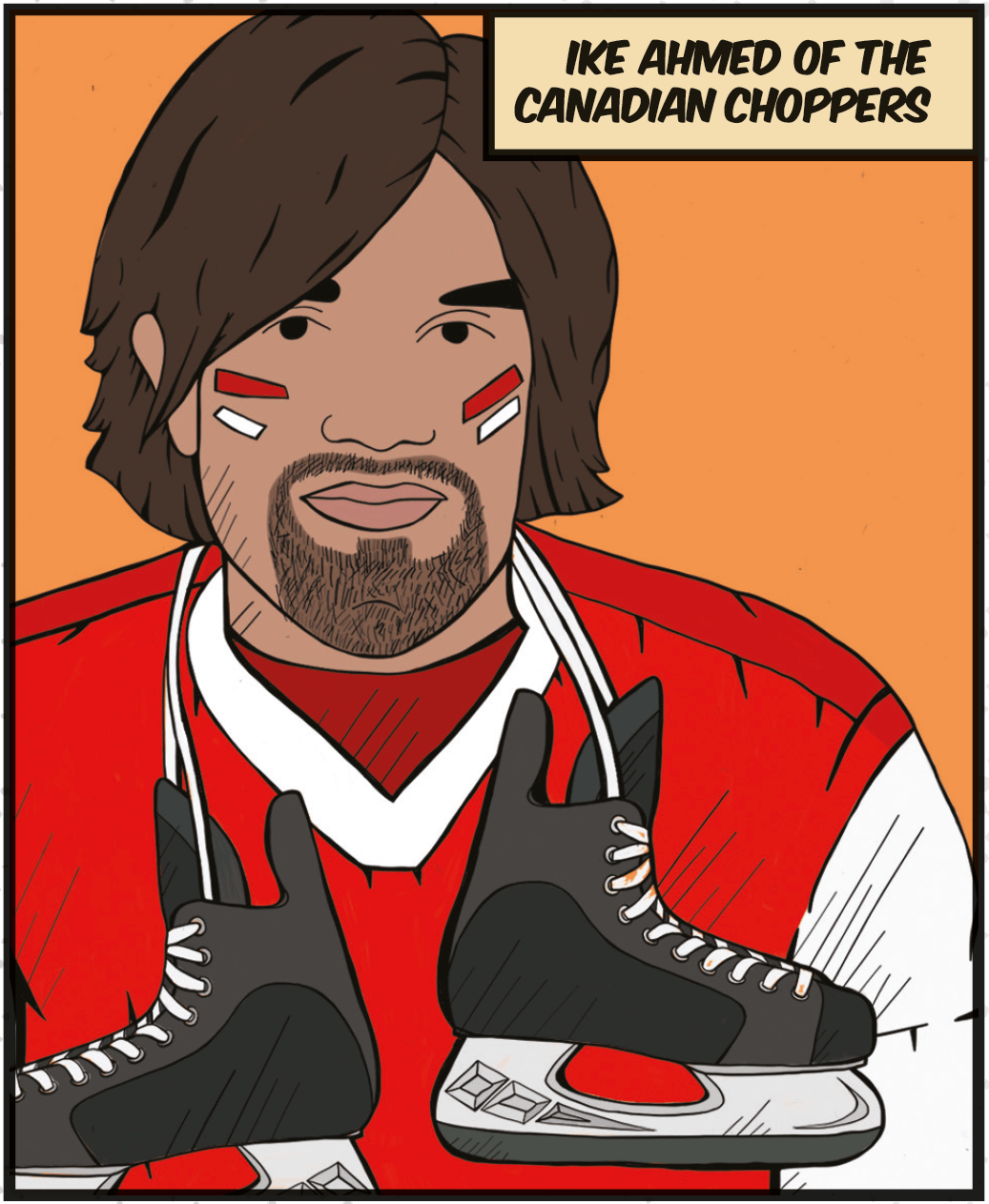
A. I’m going to show some amazing innovative examples of how to save IOLs. What we can see here is an example of stripping zonules. I’m not sure what the process is called yet – we won’t mention any surgeon’s name here. The zonules are stripped away by the surgeon, who isn’t paying attention, and the crowd is just absolutely horrified! So we’re going to try and fix these zonular problems.
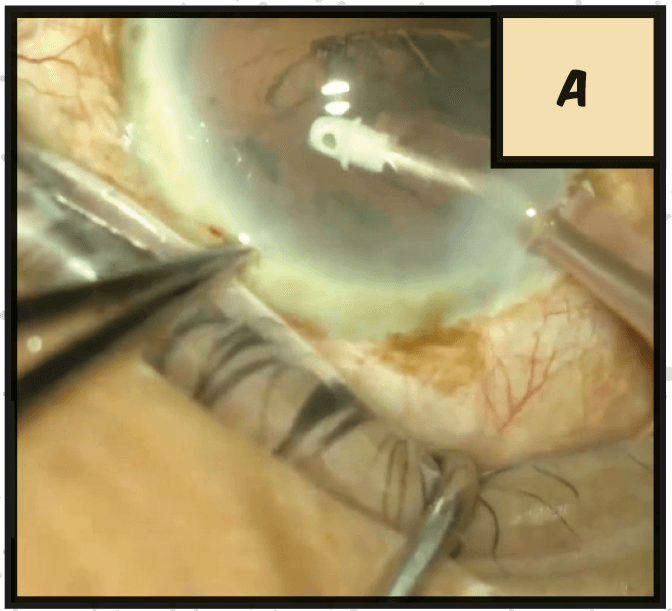
B. Here’s an example from one of the other teams. This was an attempted small incision ECCE gone wrong. It’s so important to manage the vitreous in these cases, because the vitreous will get in the way of us scoring goals.
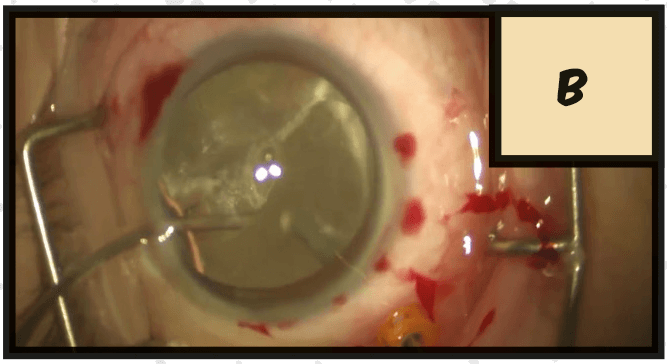
C. So, we’ve got to manage the vitreous through a pars plana approach, and using the right hockey sticks for our game is so important. Here we can see micrograspers grabbing the lens, levitating it forward, and simultaneously passing the capsulorhexis from one hand to the next.
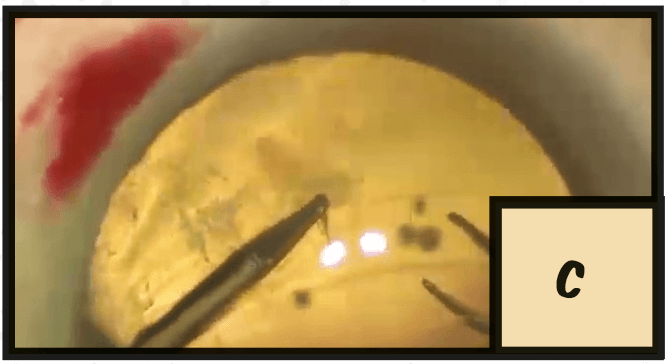
D. It’s important, whether you’re a right- or left- handed stick, to be able to use those sticks, working together hand to hand. This is basically passing to each other; the best hockey players know where the puck is going – an Ike Ahmed-modified Wayne Gretzky quote there – and the best surgeons know where the capsulorhexis is going, right?
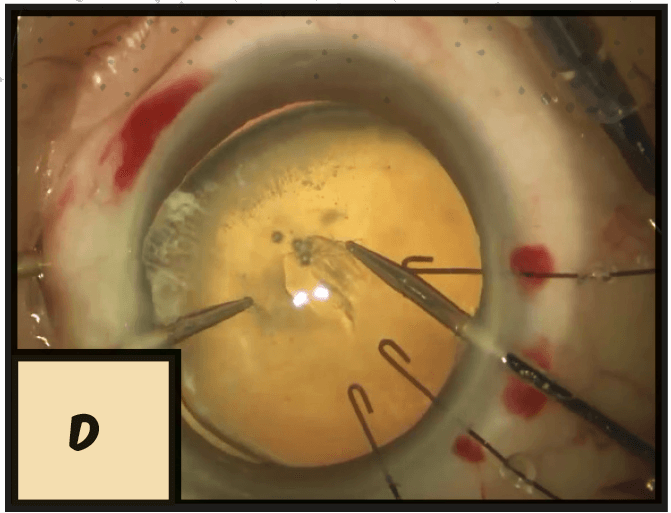
E. You see how we’re also using iris hooks for support – it’s a team game here, and in a team game, we use other players, including other instruments. We need to have some of these zonules left to help out – thank goodness for the three zonules that were left!
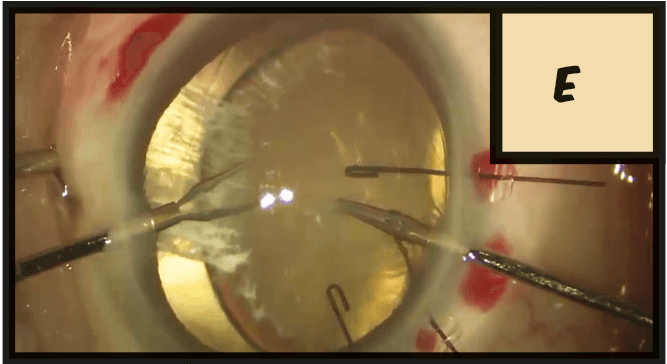
F. So the zonules are some of the grunt players on the team. You can see how well they’ve held up here, but we’ve got to help them out. This is one of the benefits of using some of the latest capsular tension devices.
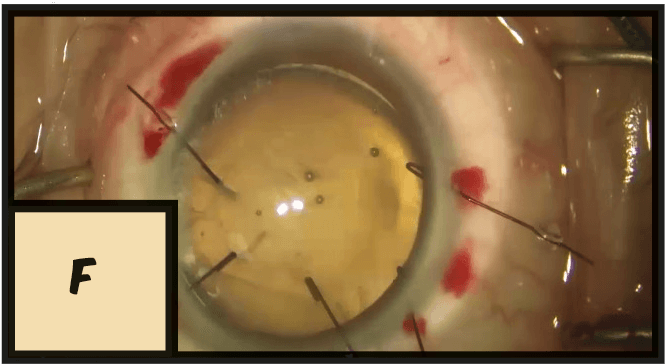
G. This is some of the latest technology in eye hockey, allowing us to really center these lenses, making sure these pucks score us a goal and are shot in to the net. A capsular tension ring (CTR) helps circumferential support, to make sure we have a well centered lens, again making sure that we have optimal fixation.
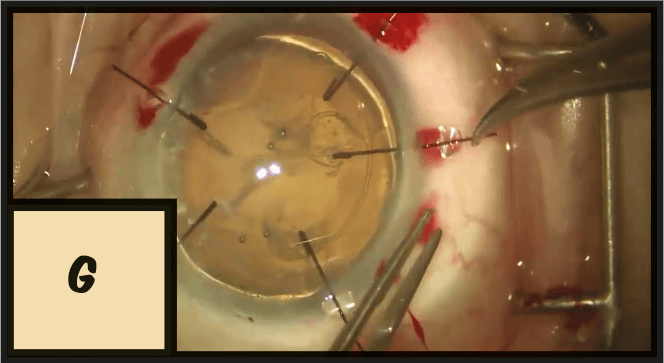
H. At this point, the game is in hand. We have the capsule on lockdown, we’ll approach the cataract as we routinely do through a small incision phacoemulsification. We’ll then need to rely on extra suture support and we’re using the latest technology: Gore-Tex suture. It has excellent durability – we use it in some of our hockey gear too!
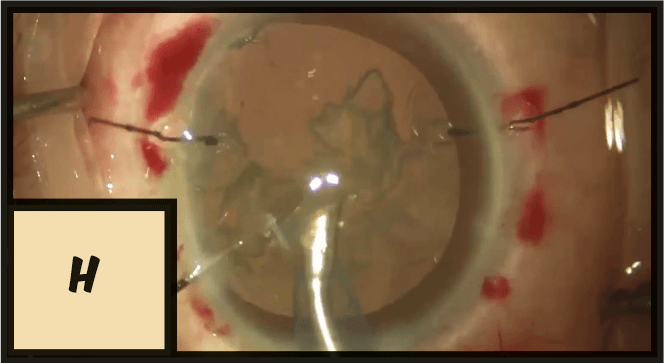
I. This is our preferred suture using an ab externo technique to fixate both segments. These segments are versatile and that’s important; you need players that work in the corners. I think the crowd will like the story here – we fixated the IOL in position, and this is definitely a goal in overtime.
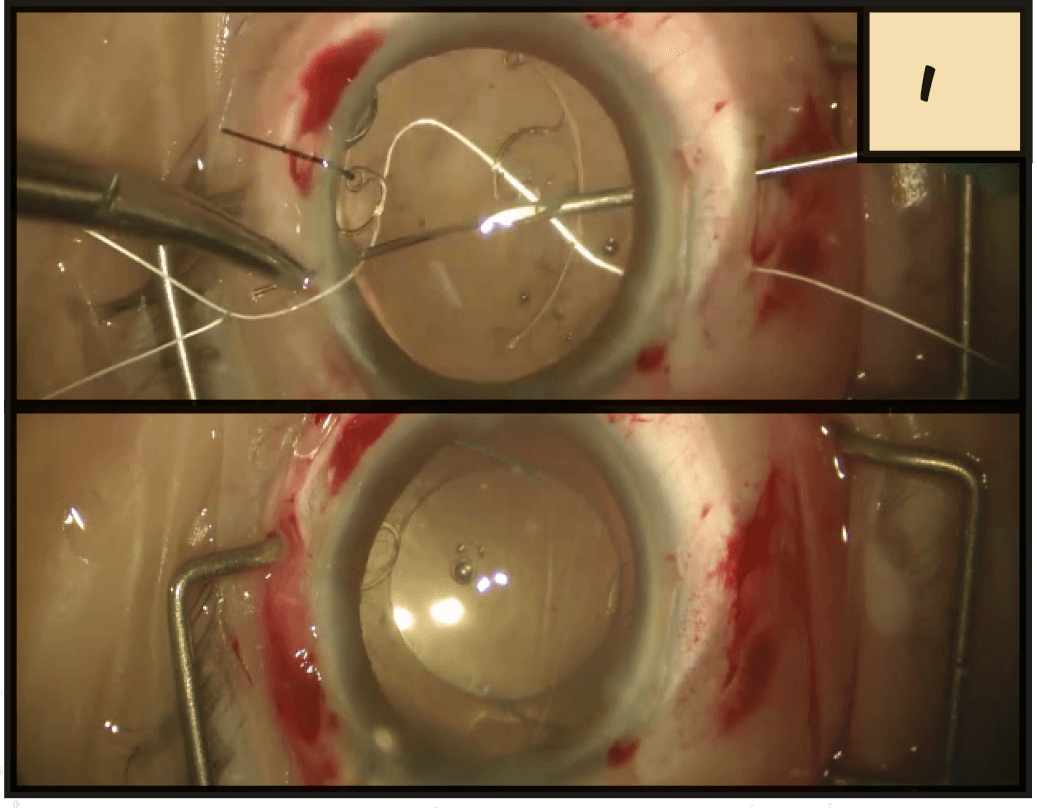
J. Here’s another shot on goal. The IOL was nowhere to be seen, and we used a posterior levitation technique. Using a 30 G needle entering through pars plana, bringing the lens up, we like to refixate these lenses when we can – notice we have a couple of strategic iris hooks present. You’ve got to know where to pass the puck, and make sure that the players are working together.
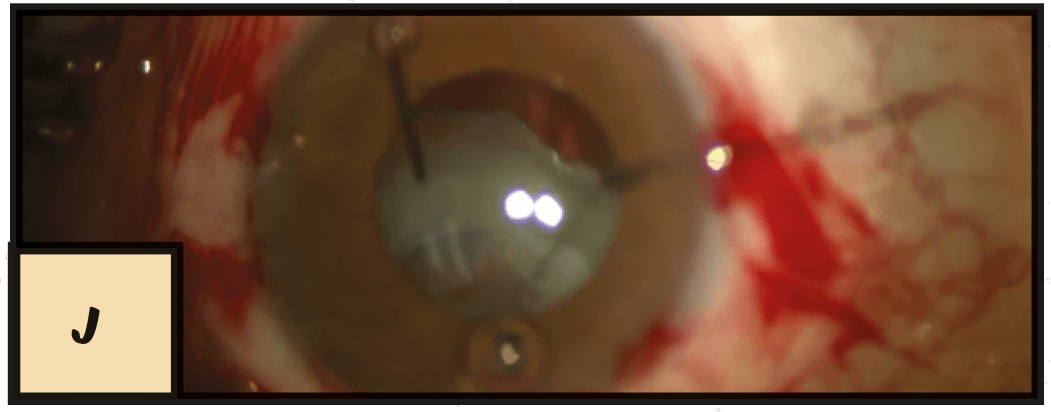
K. Again, using an ab externo technique, and a 25 G needle, going through the peripheral capsule to basically surround the haptic here with a loop of suture, and we’ll refixate the lens back in position. Some of these players are old and have played hockey for the past 15 years. With this technique, they can still last another 15 years.
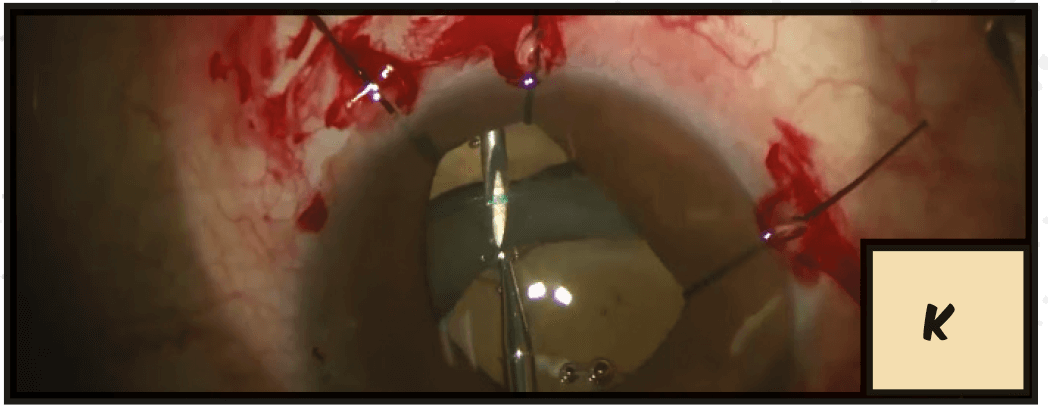
L. Here we refixated the haptics with that suture again. We’ve got a well-centered IOL here, and a well-positioned small incision technique. So we’re ending with a good score!
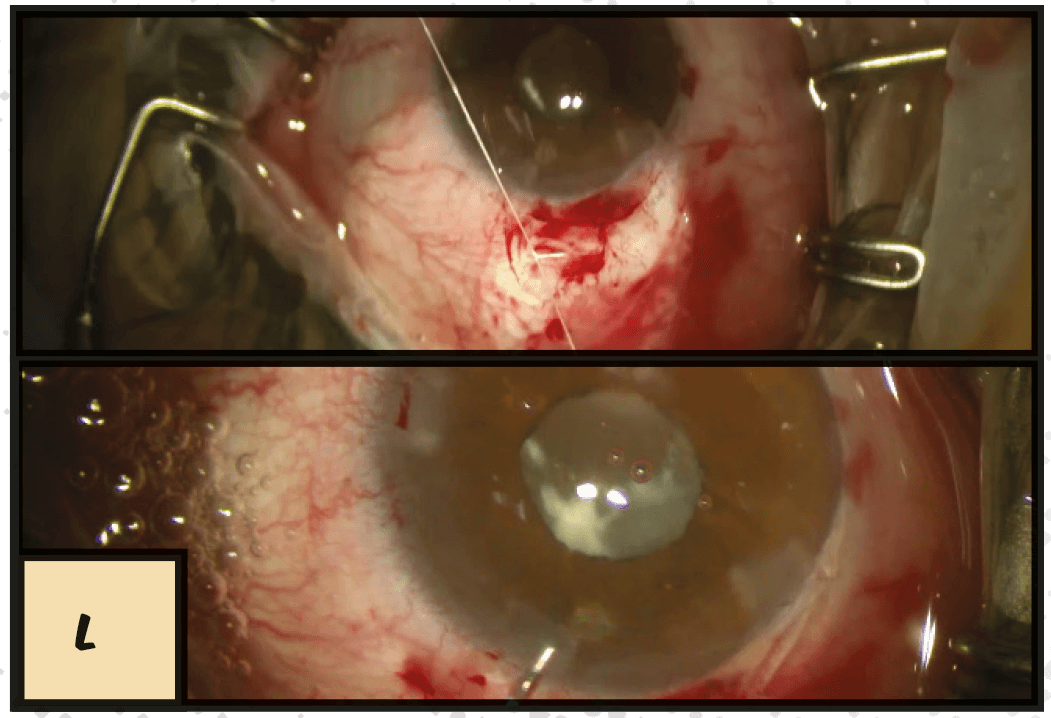
Aye aye captain, ARRR! Captain Ectopia (Lentis) Ninja-ing In and Out of a Tight Spot
